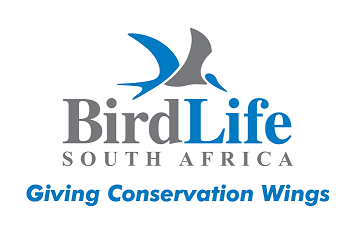Southern Bald Ibis (Geronticus calvus)
CAR summary data
Habitat and noted behaviour
Sightings per Kilometre
Please note: The below charts indicate the sightings of individuals along routes where the species has occured, and NOT across all routes surveyed through the CAR project.
Regional Status

Global Status


IUCN Data (Global)
IUCN 2024. IUCN Red List of Threatened Species. Version 2024-1 (www)Assessment year: 2024
Assessment Citation
BirdLife International 2024. Geronticus calvus. The IUCN Red List of Threatened Species 2024: e.T22697496A234993178. Accessed on 20 December 2025.Geographic range:
Geronticus calvus is restricted to mesic grasslands in Lesotho, north-east South Africa and west Eswatini. The core range lies in the north-eastern Free State, Mpumalanga and the KwaZulu-Natal Drakensberg. It was previously widespread in the Eastern Cape and extended into the Northern Cape (Colyn et al. 2020) but the the south and south-western parts of its historical range had contracted considerably by the first half of the 20th Century (Siegfried 1971). Colyn et al. (2020) estimated the reduction in range at 49% between the historical (1930-1999 records) and recent (post-2000) distribution of breeding colonies. Most of this contraction occurred prior to 1970 (Siegfried 1971, Manry 1985), and Lee et al. (in prep.) found no evidence for a change in the extent of occurrence (EOO) between the two Southern African Bird Atlas Projects (SABAP1, 1987-1992, and SABAP2, 2007-present), nor within the second atlas period. There is evidence that it is starting to recolonise the Eastern Cape area from Lesotho (Boshoff and van Niekerk 2007, Colyn et al. 2020, Lee et al. in prep.). The current breeding EOO, based on the information in Colyn et al. (2020) and using a convex hull to derive the minimum convex polygon (IUCN 2022), is 228,000 km2.Most, 75%, of current breeding colonies are in South Africa, with 25% in Lesotho and less than one percent in Eswatini (Colyn et al. 2020). The BirdLife South Africa monitoring database has information on 319 colonies monitored since 2000, of which 26 are recorded as abandoned (Lee et al. in prep.). New colonies are regularly found and some small abandoned colonies have subsequently been recolonised (Lee et al. in prep.) and it is uncertain that there is any decline in the species' area of occupancy (AOO) as measured in the breeding season. The AOO has not been accurately quantified at the correct scale, however the area of buffered colonies using that suggest by Colyn et al. (2020) would exceed 20,000 km2.
Climate change is predicted to affect suitability of the northern and western edge of the distribution with projected changes leading to a 25.7% range contraction by 2050 here while more suitable conditions will extend further westwards at the southern edge of the range into the Western Cape, though only by 2.5% to 2050 (Colyn et al. 2020). Habitat association modelling estimates that there has been a 14.3% decline in suitable habitat since 1990 (Colyn et al. 2020), and it is estimated that there is an ongoing decline in the area and quality of suitable habitat.
Habitats:
It prefers high rainfall (>700 mm p.a.), sour and alpine grasslands, characterised by an absence of trees and a short, dense grass sward. It also occurs in lightly wooded and relatively arid country. It forages preferentially on recently burned ground, also using unburnt natural grassland, cultivated pastures, reaped maize fields and ploughed areas. It has a varied diet, mainly consisting of insects and other terrestrial invertebrates. Tends to avoid marshy areas (Kopij 2001). It has high nesting success on safe, undisturbed cliffs.Population:
Previous population estimates (Manry, 1985, Henderson 2015, Colyn et al. 2020) are the result of extrapolations from the number of breeding adults at monitored colonies; that used in the previous Red List assessment (BirdLife 2016) of 3,300-4,000 mature individuals was based on Henderson (2015). But these estimates are now thought to have underestimated the true population size. The underlying data here is the number of pairs that are breeding at a colony in a particular year, whereas we now know that a large proportion of the mature population do not breed each year and are therefore not available to be counted (Lee et al. in prep.). Conservatively accounting for the missed proportion of individuals by using the single highest count per pentad in the citizen science dataset (SABAP2) and also employing a conservative range estimate Lee et al. (in prep.) propose that the likely minimum global population is 7,000 individuals in the breeding season and 11,000 individuals outside the breeding season, and 10,000 individuals across seasons. The ratio of adults to immatures based on the colony data is between 70-80% (Lee et al. in prep.). Hence the minimum population size is likely to be 7,000-8,000 mature individuals.There is no evidence for a change in the reporting rate between the two SABAP atlas periods up to 2014 and between 2015 and 2022 the species appears to have been slightly more widely reported (Lee et al. in prep.). Within the reporting period for SABAP2 a dynamic occupancy model showed no linear trend in probabilities of colonisation nor extinction, with probability of colonisation slightly higher than extinction (Lee et al. in prep.). An analysis of species distribution models did show that the probability of the species being recorded in the second SAPAB2 period (2015-2022) was slightly lower than in the first (2007-2014). Colony monitoring indicated little change in overall numbers of nests at monitored sites. 26 of 319 colonies found since 2000 have been abandoned, but new colonies are also being found and two small abandoned sites have since been recolonised (Lee et al. in prep.).
Threats:
The most severe threat to the species is conversion and degradation of suitable grassland habitat to forestry and agriculture. In combination with climate change, habitat transformation affects the persistence of breeding colonies. Colyn et al. (2020) found that where habitat transformation surrounding the colony exceeds 15% population growth was impacted, and above 20% may cause colony collapse. However, Lee et al. (in prep.) found that overall there were no significant decreases in reproductive output overall, suggesting redistribution of adult birds rather than an an overall population impact. There is certainly concern where the surrounding habitat becomes wooded however, and it is suspected that this rate of habitat conversion will cause future population declines. Other operating threats resulting in loss of habitat in the range include open-cast mining and urban development, although neither have affected more than a very small percentage of occupied suitable habitat in recent decades.Climate change is predicted to cause shifts in the edges of the region suitable for the species, with the cumulative potential impact of a 34.4 % range reduction by 2050 (Colyn et al. 2020). This projection was based on a modelled suitable area that exceeds that currently occupied by the species (Colyn et al. 2020), hence the extent to which current range boundaries are determined by the climate variables assessed is unclear. But climate change is likely to operate in conjunction with habitat conversion to affect the pattern of productivity across the range and these two threats are suspected to eventually cause slow to moderately rapid population reductions.
The collection of chicks and eggs for food was historically widespread and overexploitation may have been a driver of reductions prior to 1980 (Siegfried 1971) but vegetation changes following severe overgrazing are thought to have been the principal cause (Collar and Stuart 1985, Matheu et al. 2020). Protection of the species in South Africa and changes in attitudes since leaves this as a very minor threat here, and a project to engage local people in ecotourism has reduced killing of birds at the remaining colonies in Lesotho, where the species has been taken for belief-based use (Anon. 2014, Colyn 2016). Colonies are sensitive to disturbance and may abandon following access to collect eggs or chicks, exacerbating the direct impacts of collecting.
Pesticide or herbicide contamination is a potential threat, noting especially concerns of indirect effects such as lowered reproductive success (e.g. Boatman et al. 2004) but this remains unstudied in the species (Lee et al. in prep.). Impacts on the species' prey base may result in similar outcomes.
The species' habit of using electricity pylons as roost sites in certain areas results in some mortality from collisions with powerlines (van Rooyen 2005): the potential population impact of this does not appear to have been studied but given the level of colony monitoring undertaken appears to have been minor to date. Expansion of linear infrastructure and development of wind farms close to colonies is a potential threat (Lee et al. in prep.) and care is needed in the planning process to minimise any additional mortality risk.
Conservation measures:
Conservation Actions UnderwayCITES Appendix II. It was listed regionally as Vulnerable in 2015 (Henderson 2015), matching the previous global assessment (BirdLife International 2016). A Species Action Plan was developed by BirdLife South Africa (BLSA) in 2016 (Colyn 2016). It has full legal protection in South Africa where it breeds in several protected areas. In Eswatini, Malolotja Nature Reserve holds a breeding colony. In Lesotho, it is recorded from Setlabathebe National Park.
Monitoring of breeding sites commenced in the mid-1960s (Siegfried 1966, Pocock and Urs 1967, Siegfried and Milstein 1970, Siegfried 1971, Manry 1985) and has continued, with BLSA conducting formal colony monitoring since 2007 to assess population trends (Henderson 2015). There is now a coordinated network of citizen scientists, and records from throughout the year are now compiled within a BLSA Southern Bald Ibis database (Lee et al. in prep). In addition data on the presence and abundance of the species has been collected in the two Southern African Bird Atlas Projects (SABAP1, 1987-1992, and SABAP2, 2007-present). Colyn et al. (2020) reassessed the breeding distribution, while Lee et al. (in prep.) assessed population trend between 1987-2021 accounting for individuals not present at breeding colonies. Studies of the ecology of the species have also been completed (Kopij 1998a, 1998b, 2001, Kopij et al. 2000) and the species was included in an assessment of the climate susceptibility of grassland and fynbos birds (Huntley and Barnard 2012).
An educational awareness programme commenced in 2016 across schools in South Africa in its core range to help reduce disturbance and the collecting of eggs and chicks (R. Colyn in litt. 2016). Roosts on pylons result in both the mortality of some birds and faults in powerlines, thus it has been recommended that bird guards be installed on the most affected pylons and anti-collision devices be fitted to the earth wire near roost sites (van Rooyen 2005). In Lesotho local people are trained to assist in an ecotourism venture at the remaining colonies resulting in a cessation of hunting birds for belief-based use (Anon. 2014). Artificial breeding structures have been constructed and successfully used at Ingula Nature Reserve in South Africa to mitigate the loss of a breeding colony due to the creation of a new dam (Ganz 2021).
Conservation Actions Proposed
Conduct surveys to assess its status in Lesotho. Initiate range-wide monitoring to help clarify population trends. Protect as many of the larger breeding colonies and feeding areas as possible. Provide incentives for adopting ibis-favourable farming practices. Assess the impact of fitting bird guards and anti-collision devices to powerlines. Assess and compile best practice grassland management guidelines for high altitude areas in southern Africa (R. Colyn in litt. 2016). Conduct studies to assess the impact of agricultural pesticide use on resident Southern Bald Ibis (R. Colyn in litt. 2016).
Rationale:
The population appears to have been largely stable over recent decades, with no evidence of significant declines. There continue to be colony abandonments but the overall apparent stability of the population indicates that, to date, these result a redistribution of adults rather than in declines. Equally new colonies are being located and it is unclear if recent rates of abandonment exceed rates of formation. However, detailed habitat modelling has predicted a future decline in suitable habitat equivalent to 29% over the next three generations. While the magnitude of the effect on the population of this predicted change is unclear, it is suspected to result in a slow to moderately rapid future population reduction if the areal loss of habitat is not compensated by productivity increases.With a small population that is suspected to suffer a future population reduction, and with the rate of this reduction suspected to approach threatened thresholds, the species is assessed as Near Threatened. If a consistent population decline becomes evident the species would require reassessment at a higher threat category. Continued population monitoring is required.
 Login
Login


